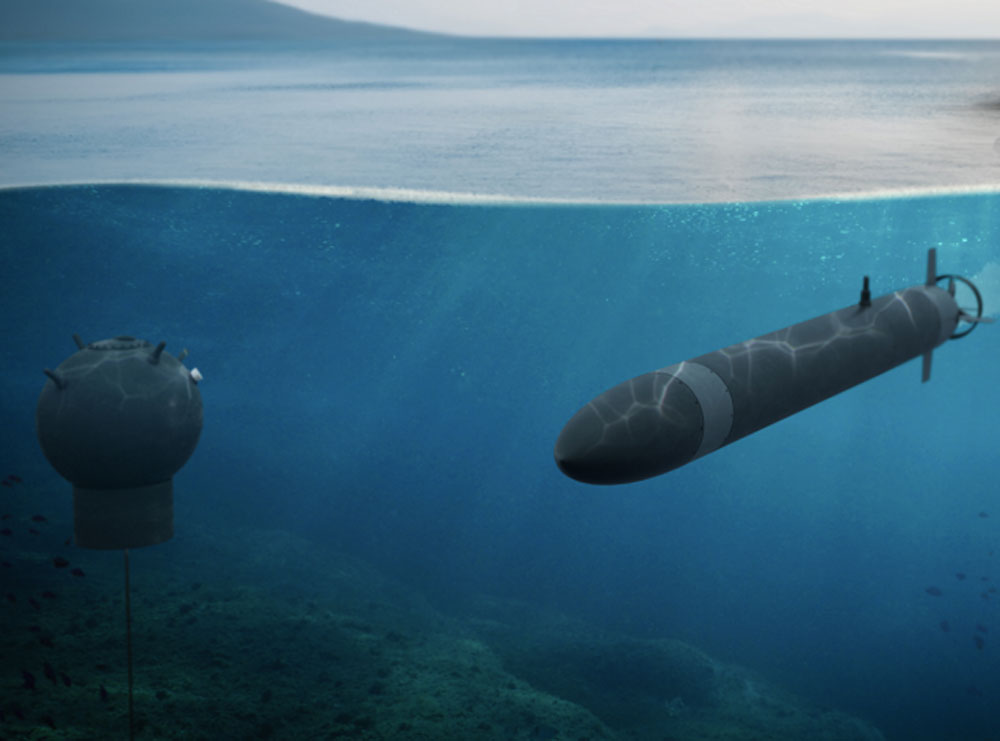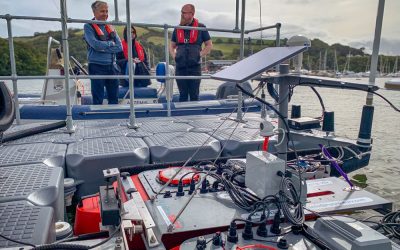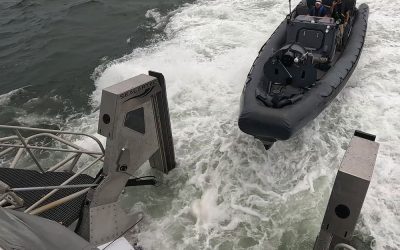As a developer of cruise missiles and recon systems, and with the US government as a key customer, it’s fair to say that Virginia-based Leidos has cut its teeth on defence solutions. However, the company’s latest unmanned unwater vehicle (UUV), the Sea Dart, is designed to support both naval and commercial customers, undertaking tasks ranging from mine countermeasures and battlespace preparation to undersea asset inspections (including around oil rigs and wind farms) and environmental sensing. The concept is for a modular, payload-agnostic bot, obviating the need to deploy separate UUVs for different applications.
The UUV is available in two configurations. The 1.63m-long Sea Dart-6, named for its full diameter of 6” (152mm), weighs 29.4kg, can descend to 600m and exceeds 12knots, with an endurance of 11-19 hours. The Sea Dart-9, meanwhile, weighs 54.3kg and features a length of 1.57m, a diameter of 9” (229mm) and a speed of 8knots. This model appears to be the pick for lengthier, higher-payload missions in less remote waters, given its 19-hour+ endurance and depth rating of 300m.
The Sea Darts are powered by lithium-ion batteries – rated 1.1kWh for the Sea Dart-6, 2.2kWh for the Sea Dart-9 – and each variant incorporates a direct-drive DC brushless motor with a three-bladed propeller, plus four control fins for pitch and yaw. A modular hull section measuring 26.5” (673mm) can be added, should end users require a larger battery spread for an endurance boost. The vehicles come with dual-band 2.4/5 GHz WiFi.
Dave Lewis, Leidos senior VP of sea systems, adds that the Sea Dart is compatible with the US Navy’s unmanned maritime autonomy architecture (UMAA) – a standardised, modular and scalable software framework designed to support both UUVs and USVs. Leidos’ portfolio includes medium-sized USVs such as the Sea Castle force multiplier and the 40knot-capable Sea Archer, a UUV designed for intelligence, surveillance and reconnaissance (ISR) work in high-risk waters.
Leidos is particularly keen to stress the Sea Dart’s relative affordability: with a base cost of approximately US$150,000, both variants of the vehicle will cost “up to 80-90% less than other small UUVs with similar performance”, the company claims. This cost efficiency is partly credited to the use of commercial off-the-shelf components to reduce production costs and speed up manufacturing times, and partly to the Sea Dart’s open architecture model, which allows it to integrate with various software systems and payloads without the need for proprietary or specialised hardware. The UUV also uses common tech elements across its two (and future) variants to reduce lifecycle costs and maintenance expenses.
As a result, Leidos envisages a strategy of high-volume production, stating that it aims to initially produce 180-200 Sea Dart units yearly. This should tie in with the US Department of Defense’s ongoing Replicator initiative, which is focused on the rapid scaling of unmanned systems, including sea drones and minimal-crew/zero-crew vessels, using commercial technologies. Although not explicitly confirmed by Leidos, the Sea Dart’s low cost and UMAA compatibility suggest it could support swarm tactics for operations such as minefield mapping, for example.
Now, a 12.75” (324mm)-diameter version of the vehicle is “under consideration”, Leidos reveals.




